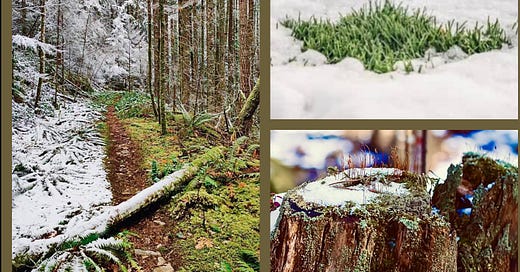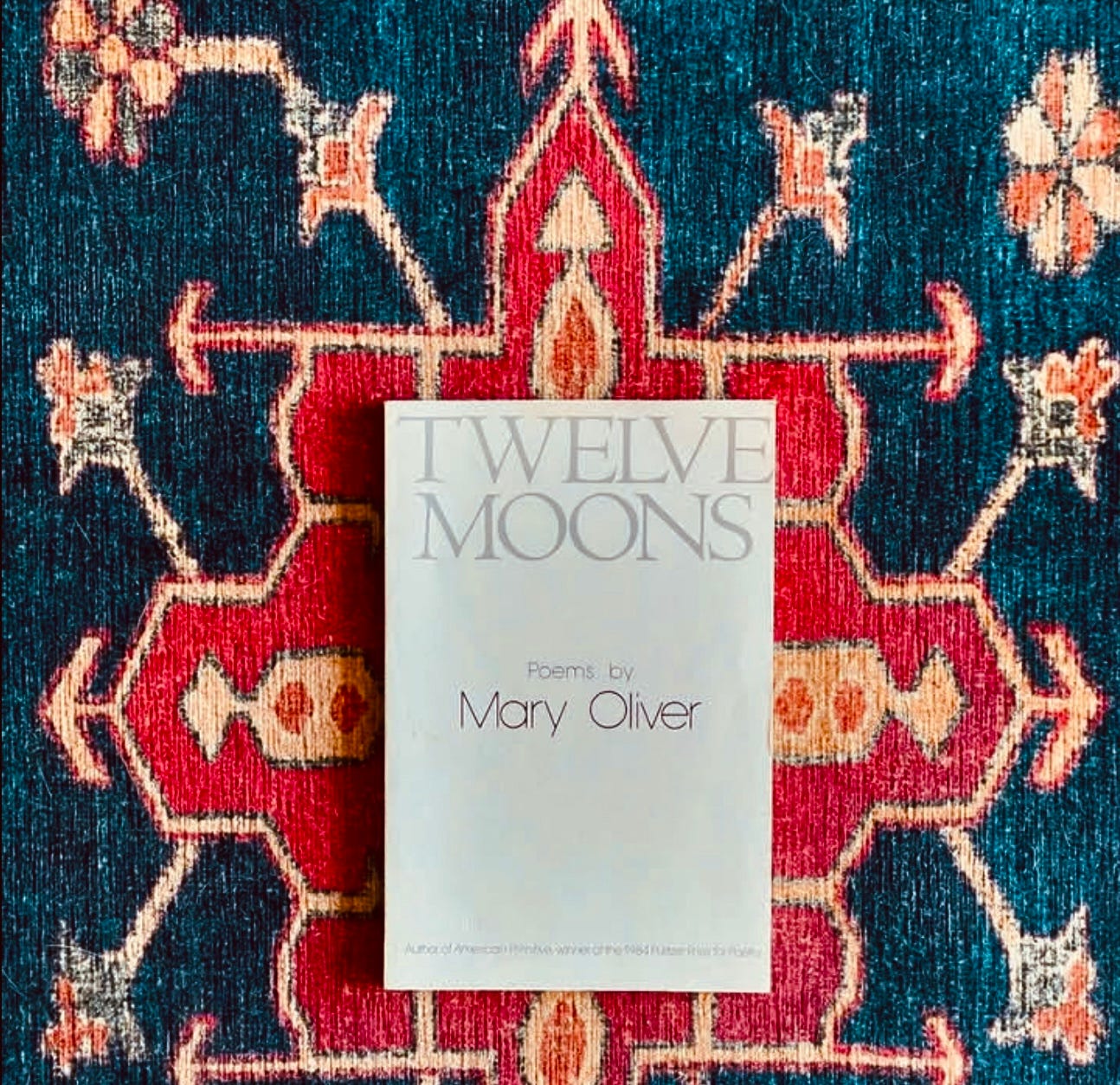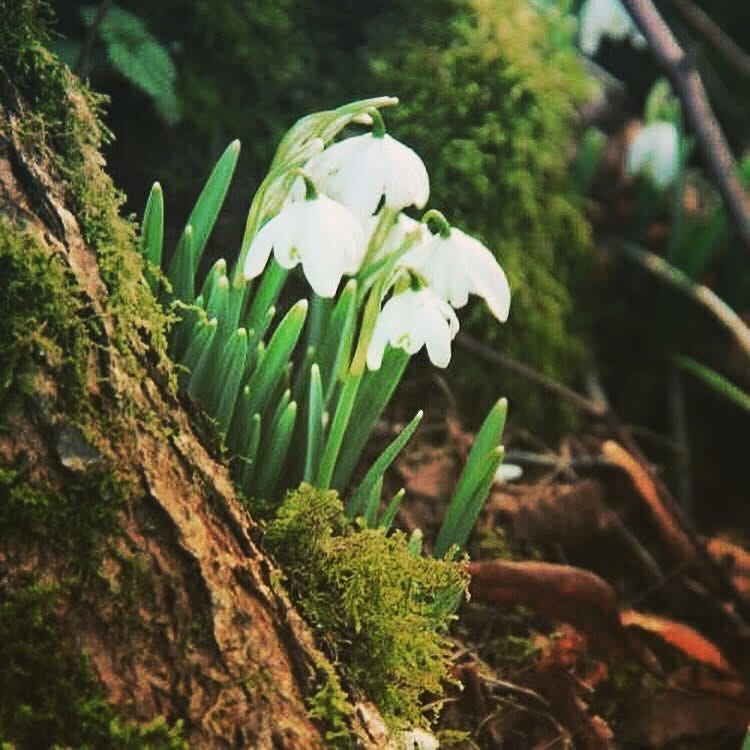WHAT is it about spring sends me toward that dusty shelf full of favorite dusty books books. ITCHY EYES. Mary Oliver in particular older works, ones rarely open. Twelve Moons was purchased used, and abused at the Strand Bookstore outside CHEAPO bin racks draggded out ont the dusty NYC sidewalk after a long chat and some Thai food and a few tokes with Trixie at her 810 B'way loft, it cost a dollar, the tape around its edges yellowing and peeling back like the rind of yellowed ice on the edge of the brook here at Hemlock House . FIRST poem, “Sleeping in the Forest,” has long been one of my favorites while living on10th Street and was still pretending to be a hot shit NYC hard ass. Its last line, “by morning I had vanished at least a dozen times into something better,” made me think that by lying down naked in the fresh dewy ,moss I could eventually evaporate into the sky. Someday maybe I will, after living in Vermont for a few years I know I'll be wearing muck boots and flannel underwear!
When I arrived at the end of the book not recognizing the final poem, “Worm Moon.” It had not previously spoken to me. But as I am living in a Wormy World with some Wormy People and a Wormy Virus,Wormy Wars ... Worming its way into our Collective Brain Pan, I read “In March the earth remembers its own name. Everywhere the plates of the snow are cracking…And the name of every place is joyful,” suddenly a SMILE for the first time in a long while.Skimming along on snow-becoming-slush during the big melt here at Hemlock House; watching green moss appear in the rocky crags and nooks of the forest around me; turning my face to the bright sun and the full moon…with my cat ; Kitka Darling in my arms who has also come out of winter hiding inside the house...this Worm Moon has been joyful.
From my friends in Vermont, I know that the worms must be active there because the Grouse and Woodpeckers are back. These feathered friends do come and visit in the deeper snow but they seldom linger.... They stick their long, sensitive bill into the wetland soil, open just the tip, and nab whatever writhes deep in the mud. Birders practice their ninja skills when the new flush of birds get romantic. I have began to notice the grouse this year especially....A male begins at dusk or dawn by “peenting” on his dancing ground. Then, without warning, he flies upward in a wide spiral and sideslips back down to his legs, making twittering sounds with his wings. The ninja skills come in as I dart closer while he’s in the air, and hold my breath while he lands within arm’s reach. Like all smart women the female Grouse hides nearby and feigns indifference.
Whoever named the Worm Moon, must have lived farther south. Up here, not only are the worms still hiding beneath a foot of subsiding snow and the frost line, they aren’t native. Prior to plant nurseries transporting soil among roots, and fishermen dumping leftover bait on the shore, any native worms had been extirpated by the glaciers. Various resources list other names for the moons of March and April: Snow crust Moon, Sugar bushing Moon, Maple Sap Boiling Moon, and Broken Snowshoe Moon are a few. As my friends slog through their sugarbushes to tap trees, and fire up their evaporators, these names feel more accurate.
“The season of curiosity is everlasting and the hour for adventure never ends…” continues the poem. I agree, Yaktrax on my muck boots and I mosey into the forest. Melt water covered the ice, and in one small puddle the sky lace of bare twigs lay reflected. Oak and maple leaves cupped the water as if they hoped to gain the lichens’ power to wake up from winter. Hemlocks outnumber them twisted into Alexander Calder sculptural like forms...
Moss was waking up in an emerald patch surrounded by snow. Resourceful, one-cell-thick leaves allow water to soak in directly to where it’s required. Moss doesn’t even have roots. They don’t suck resources out of the frozen ground. Their tiny rhizoids only serve to anchor them Moss does need a film of rain, or melting snow, to cover the outside of the leaf and act as a conduit for carbon dioxide to enter the leaf from the air. On the nearby snowbank, a faded maple leaf caught the sun. Unlike the moss, no sign of life remained. Bacteria and fungi working all winter underneath the snow had taken all but its toughest food materials. They enrich the soil. Soon, sugars made by that leaf will rise again through the maple’s trunk and feed the bursting buds. Spring is the season when all must be stripped bare in order for life to thrive again. The snow, the ice, the leaves: all vanishing into something better. So perhaps this Wormy Moon in a Wormy Time filled with Wormy People doing Wormy Things and a Wormy President is the Perfect Tone Poem for us.Than again, maybe I should just let Mary Oliver handle it...Yeah that’s probably better she is a better writer than me,so far!
Happy ALMOST Spring
HemlockHouse VT









